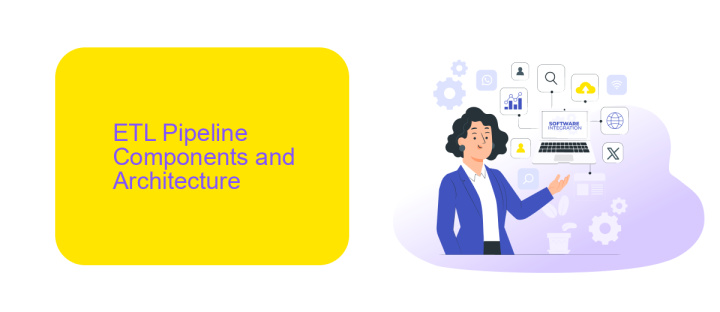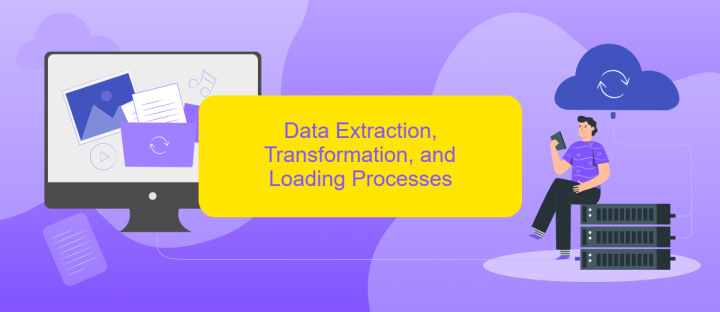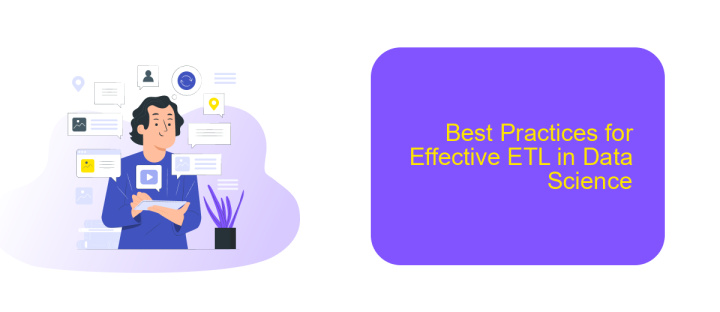ETL Data Science
ETL (Extract, Transform, Load) processes play a crucial role in data science by enabling the efficient handling and transformation of raw data into valuable insights. These processes streamline data from multiple sources, ensuring it is clean, consistent, and ready for analysis. In this article, we will explore the significance of ETL in data science and how it enhances data-driven decision-making.
Introduction to ETL and its Role in Data Science
ETL, which stands for Extract, Transform, Load, is a crucial process in data science that involves extracting data from various sources, transforming it into a suitable format, and loading it into a data warehouse or another storage system. This process ensures that data is clean, consistent, and ready for analysis, providing a solid foundation for data-driven decision-making.
- Extract: Collecting data from different sources such as databases, APIs, and flat files.
- Transform: Cleaning, filtering, and structuring the data to meet specific requirements.
- Load: Storing the transformed data into a target system for further analysis.
In the realm of data science, ETL processes are essential for preparing data for complex analyses and machine learning models. Tools like ApiX-Drive can simplify the integration of various data sources, automating the ETL process and ensuring seamless data flow. By leveraging such services, data scientists can focus more on extracting insights rather than dealing with data preparation challenges.
ETL Pipeline Components and Architecture

An ETL pipeline consists of three main components: Extract, Transform, and Load. The extraction phase involves retrieving data from various sources, such as databases, APIs, and flat files. This data is then transformed through a series of processes, including data cleaning, normalization, and enrichment, to ensure it meets the desired format and quality. Finally, the transformed data is loaded into a target data warehouse or data lake for further analysis and reporting.
The architecture of an ETL pipeline can vary depending on the complexity and requirements of the data integration process. Modern ETL solutions often leverage cloud-based platforms and services to enhance scalability and flexibility. For instance, ApiX-Drive is a powerful tool that simplifies the integration of various data sources by providing pre-built connectors and automation capabilities. This allows organizations to streamline their ETL processes, reduce manual intervention, and ensure data consistency across different systems. Overall, a well-designed ETL pipeline is crucial for maintaining the integrity and reliability of data in any data science project.
Data Extraction, Transformation, and Loading Processes

Data extraction, transformation, and loading (ETL) are critical processes in data science that ensure data is accurately gathered, processed, and stored for analysis. These steps are essential for converting raw data into meaningful insights. The ETL process can be broken down into three main stages:
- Data Extraction: This initial phase involves collecting data from various sources such as databases, APIs, and flat files. Tools like ApiX-Drive can simplify this process by automating the extraction from multiple sources, ensuring data consistency and reliability.
- Data Transformation: Once extracted, the data needs to be cleaned and transformed to fit the analytical requirements. This may include normalization, aggregation, and enrichment of data. Transformation ensures that the data is in a suitable format for analysis.
- Data Loading: The final stage involves loading the transformed data into a data warehouse or data lake. This step is crucial for making the data accessible for querying and analysis by data scientists and business intelligence tools.
By efficiently managing the ETL processes, organizations can ensure that their data pipelines are robust and scalable. Leveraging tools like ApiX-Drive for integration can significantly streamline these processes, allowing for more accurate and timely data-driven decisions.
Best Practices for Effective ETL in Data Science

Effective ETL (Extract, Transform, Load) processes are crucial for successful data science projects. Ensuring data quality and consistency requires following best practices that streamline data integration and transformation. One key aspect is to automate as much of the ETL process as possible to minimize human error and increase efficiency.
Another important practice is to implement robust data validation and error-handling mechanisms. This ensures that any anomalies or inconsistencies in the data are identified and addressed promptly, maintaining data integrity throughout the ETL pipeline. Additionally, leveraging scalable tools and platforms can help manage large volumes of data more effectively.
- Automate ETL processes to reduce manual intervention.
- Implement strong data validation and error-handling mechanisms.
- Utilize scalable ETL tools and platforms.
- Regularly monitor and update ETL workflows.
- Ensure data security and compliance with regulations.
For seamless integration of various data sources, consider using services like ApiX-Drive, which facilitate the connection and automation of data flows between different applications. By adhering to these best practices, you can enhance the efficiency and reliability of your ETL processes, ultimately contributing to more accurate and insightful data analysis.


Challenges and Future Trends in ETL
One of the primary challenges in ETL (Extract, Transform, Load) processes is managing the ever-increasing volume and variety of data. As organizations collect data from multiple sources, ensuring data quality and consistency becomes a significant concern. Additionally, maintaining real-time data processing and integration poses technical difficulties, especially with legacy systems. Security and compliance requirements add another layer of complexity, necessitating robust data governance frameworks to protect sensitive information.
Looking ahead, the future of ETL will likely see advancements in automation and AI-driven data processing. Tools like ApiX-Drive are paving the way by simplifying the integration of various data sources through automated workflows, reducing the need for manual intervention. The adoption of cloud-based ETL solutions is also expected to grow, offering scalable and cost-effective alternatives to traditional on-premises systems. Moreover, the increasing emphasis on real-time analytics will drive the development of more sophisticated ETL pipelines capable of handling streaming data efficiently.
FAQ
What is ETL in Data Science?
Why is ETL important in Data Science?
What are the common challenges in the ETL process?
How can ETL processes be automated?
What skills are required to perform ETL in Data Science?
Apix-Drive is a universal tool that will quickly streamline any workflow, freeing you from routine and possible financial losses. Try ApiX-Drive in action and see how useful it is for you personally. In the meantime, when you are setting up connections between systems, think about where you are investing your free time, because now you will have much more of it.

